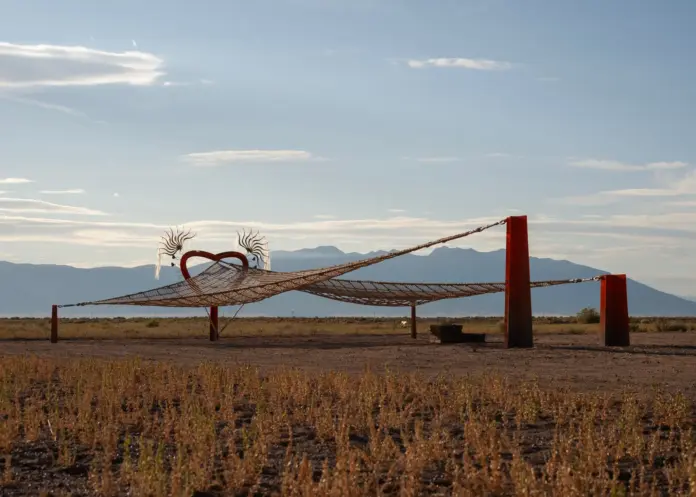“Land art is at a crossroads. Michael Heizer, the cowboy-hatted stalwart of earthworks, began the charismatic megasculpure, “City,” in 1972; the complex of cast concrete and bulldozed mounds crisscrossing Nevada’s desert is almost finished. Meanwhile, new projects, and fresh looks at historical ones, indicate a readiness for a holistic understanding of land, in which this sprawling, misjudged genre has a role — from high-concept landscaping by Humeau or Sam Van Aken, who planted an orchard of rare heirloom fruit trees on Governors Island; to intricate critiques of property law and power by Cameron Rowland and Kevin Beasley; to “Groundswell,” a survey at the Nasher Sculpture Center in Dallas of women making land art since the ’60s.”
“Having made the trip to “Orisons,” and the ghost of “Wheatfield,” and a handful of other land art pilgrimages, I confess I thought I might visit Maxie Road, too. I got no further than Google Maps. “We have to ask ourselves,” said Carter, “why do I have this desire to survey and occupy this land when the work is not predicated on that?”
What could frame the problematic power of land art better than a fallow acre you could visit, but shouldn’t?
“The land art that was done before is about artistic selfishness, wanting more space,” Denes said. Artists are approaching the future of land art, and the future of land, with more humility.”
___________________________________________
Diehl, T. (2023, September 4). Land Art Today, beyond Cowboys with bulldozers. The New York Times. https://www.nytimes.com/2023/09/04/arts/design/land-art-environment-groundswell-women.html
____________________________________________
This sort of art that works with the land is one that is not uncommon on park or large museum properties. Much of land art tells a story, a good combination with the narratives presented by a historical site or museum. Specifically the empty space of Huffman Flying Field has potential for this. Working with local artists could uplift the local history portion of the museum. The examples of art in this article are all think pieces, things that make people want to know more, which is exactly what the aviation museum is looking for.




